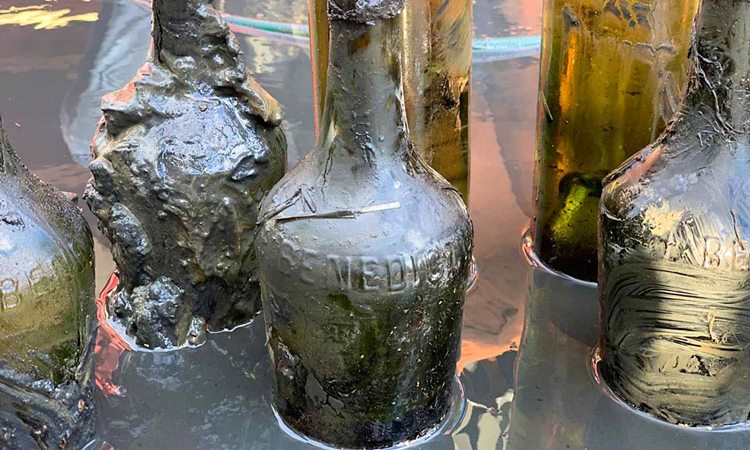Unveiling 6 Intriguing Facts About Wine
WINE FACTS – You probably didn’t know these fascinating facts about wine. Many interesting facts about wine are frequently missed by the general public, either because no one takes the time to look them up or because they are still unknown.
The dominance of wine has extended across the globe. In 2021, the world witnessed an astonishing consumption of 23.6 billion liters of wine, a quantity roughly equivalent to filling approximately 9,440 Olympic-size swimming pools with this beloved beverage.
Here are some fascinating insights into reds, whites, and rosés, spanning from their illustrious history to the cautionary considerations surrounding wines recovered from shipwrecks.

1.People Have Been Making Wine for Thousands of Years
Between 2007 and 2010, an archaeological team unearthed an ancient winemaking facility in a cave near Areni, Armenia, dating back to around 4000 BCE. This discovery included remnants such as a grape-crushing press, fermentation, and storage jars, ceramic cups, and preserved grape vines, skins, and seeds. Even earlier evidence of viniculture, dating back to about 6000 BCE, exists. One of the oldest wines still produced today is Commandaria, a sweet red-white dessert blend from Cyprus originating in 2000 BCE.
2. Almost All Wines Are Grown From a Single Species of Grape
Nearly all wines are cultivated from a single grape species, Vitis vinifera, believed to be native to Western Asia. Over centuries, winemakers selectively bred and hybridized these vines, resulting in around 8,000 grape cultivars, including well-known varieties like Pinot noir, chardonnay, sauvignon blanc, and Merlot. While traditionally cultivated in regions with specific climates like Italy, Spain, and France, major wine producers now include the United States, Chile, Australia, South Africa, and others.
3. In the 19th Century, an Insect Nearly Wiped Out France’s Wine Industry
France’s wine industry faced a near-devastation from an introduced aphid called phylloxera. Originating from North America, this pest wreaked havoc on French vineyards, leading to the grafting of phylloxera-resistant American vines onto French ones to save the industry.

4. A Wine’s Terroir Can Be Legally Protected
Initially, French wine producers in the 19th century resisted the practice of grafting American rootstocks onto their prized vines, fearing that it would jeopardize the distinctive flavor characteristics, known as terroir, of their wines. Terroir encompasses the entire grape cultivation environment, including soil and water qualities, temperature, altitude, and the impact of these elements on the wine’s flavor and aroma. To legally protect a wine’s terroir in France, the AOC system (Appellation d’Origine Contrôlée) was established, categorizing wines based on their production region and quality. This system, exemplified by the regulation that Champagne must originate from the Champagne region, ensures the preservation of each wine’s unique terroir.
5. California Wines Beat French Rivals in a Blind Taste Test
During the historic “Judgment of Paris” on May 24, 1976, California wines defied expectations by surpassing revered French counterparts in a blind taste test, leaving French wine experts astounded. The event, orchestrated by an English wine shop owner to enhance business, was anticipated to showcase the superiority of French wines. However, to everyone’s surprise, a Napa Valley cabernet sauvignon and chardonnay emerged as the winners, challenging the prevailing belief that only France could produce the world’s finest wines. Notably, bottles of these triumphant wines are now featured in the Smithsonian collection.
6. Wine Is Often Found in Shipwrecks
For centuries, wine has been traded globally, and mishaps during its transportation by ships have occasionally occurred. Some sunken vessels have revealed fully intact wine bottles in their wreckage. Despite expert advice against consuming the contents due to potential spoilage, there are adventurous individuals who remain undeterred. In 2009, a hurricane disturbed the seafloor around Bermuda, uncovering still-sealed bottles from a Civil War-era ship; however, a panel of tasters described the recovered wine as “awful.” Similarly, Champagne retrieved from a 170-year-old shipwreck in the frigid Baltic Sea was noted to have hints of cheese and “wet hair.” Among the recently discovered samples awaiting tasting are unopened bottles from the wreck of the HMS Gloucester, which sank with the future King James II of England on board, as well as bottles lost during a British steamship’s sinking after a German torpedo attack in World War I.
